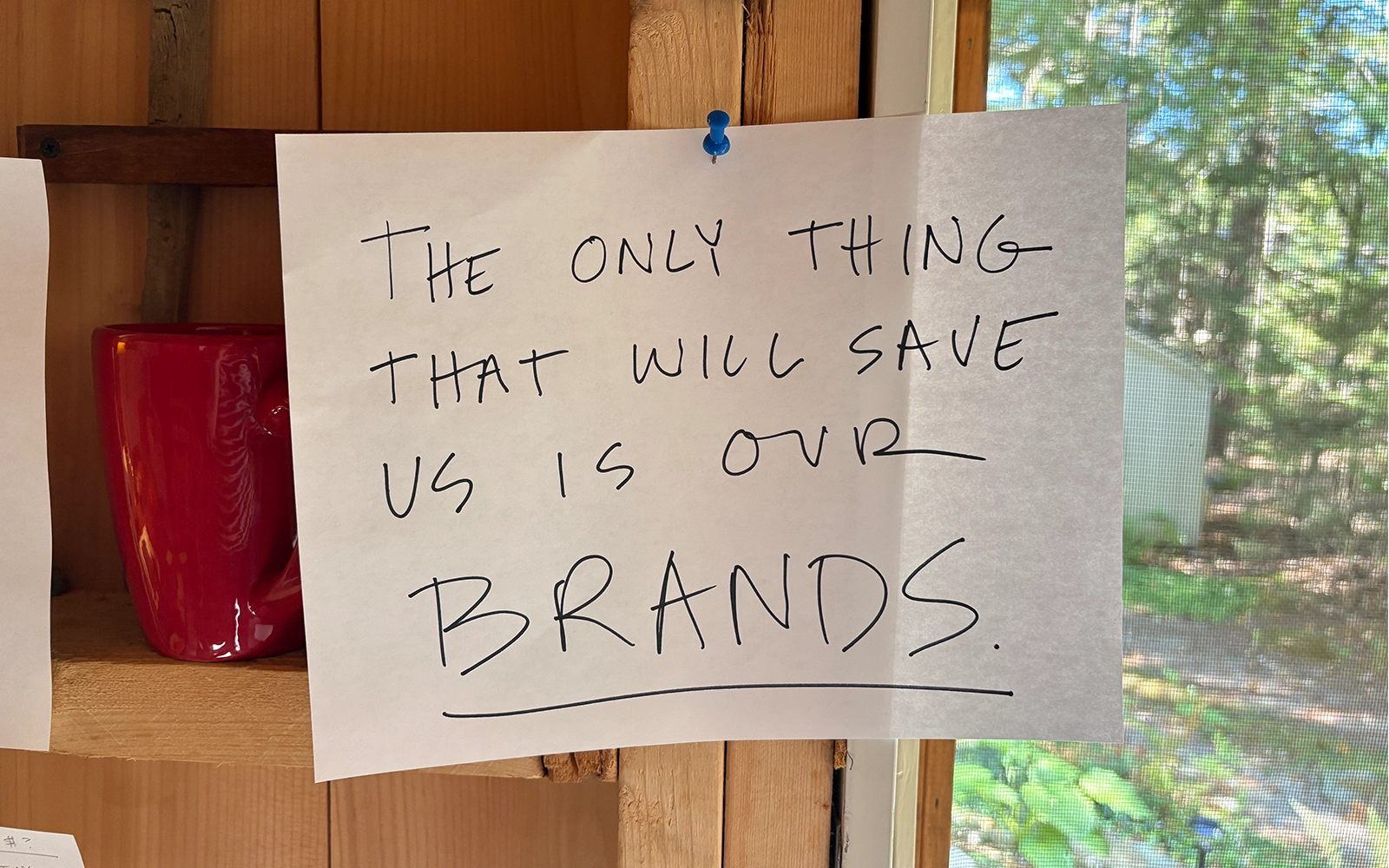Barry Diller said something recently that has become my new rallying cry.
He was on The Knowledge Project podcast, answering the host’s question about how companies are navigating marketing in the age of AI. Diller chuckled and said: “The only thing that will save us is our brands.”
I wrote it down immediately. It’s posted in my doorway now.
Because he’s right. And because I keep seeing versions of the same conversation happening with people who don’t quite get it.
Many leaders are asking teams how to use AI to create content at scale. They see it as low-hanging fruit. A way to do more, faster, cheaper. And I understand the appeal, I’ve tried it myself. AI is seductive that way. It promises efficiency. It promises reach. It promises that you can finally publish enough to keep up with the algorithm, the news cycle, the competition.
But we need to be asking ourselves another question: What happens to our brand when we do this?
That’s what needs more consideration.
Because companies live and die on their brands. That’s economics. Your brand is your moat. It’s what makes people choose you over a competitor. It’s what lets you charge more, retain customers, weather crisis. It’s one of the most valuable assets on your balance sheet.
And if we’re not careful, we put that asset at risk.
Not because AI is bad. I’m not a skeptic. I’m building with it. I’m excited about what it can do. But I’m also cautious of treating content like a volume problem when it’s actually a brand problem. We can’t solve for scale at the expense of integrity. We can’t produce more without also protecting what makes us distinct.
And the consequences are coming at us quickly.
Historically, brand erosion took decades. You could coast on reputation for years before the cracks showed. But AI accelerates everything. A competitor can flood the market overnight. A poorly considered campaign can spiral in hours. Mediocrity compounds quickly when everyone has access to the same tools and the same prompts. Then LLMs learn on the results, and the slop slide quickens.
The only real defense is clarity. Knowing who you are. Owning your voice. Building systems that reflect your brand, not dilute it.
That’s what I focused on when colleagues came to me asking how to scale content with AI. I built content tools that required the brand to be deeply understood first. It wasn’t perfect. But it was thoughtful. It put the brand at the center, which is where it should be.
Because the companies that will survive are the ones that remember what actually makes brands great. It’s not personalized ads or blog posts generated at scale. It’s community. It’s solving real problems. It’s showing up in the cultural moment in a way that means something. It’s surprise, delight, belonging. It’s the accumulation of a thousand small choices that say: We know who we are, and we’re not willing to compromise that for convenience.
Diller’s right. The only thing that will save us is our brands.
But only if we protect them. Only if we manage them with intention and care, even as we experiment and adapt. Only if we put critical thinkers at the helm who understand that a brand isn’t just a logo or a tagline. It’s a promise. And breaking it is expensive in ways that go far beyond what you saved on content creation.
AI isn’t the enemy to brands. But human carelessness is.
About Amy: Amy is a brand builder with over two decades of experience helping companies articulate and protect their core identity. Her work focuses on the intersection of brand integrity and emerging technology, guiding leadership teams through strategic adaptation without sacrificing what makes them distinct. Driven by a belief that brands are among a company’s most valuable and vulnerable assets, Amy builds systems that ensure clarity, intention, and long-term resilience in rapidly changing markets.
